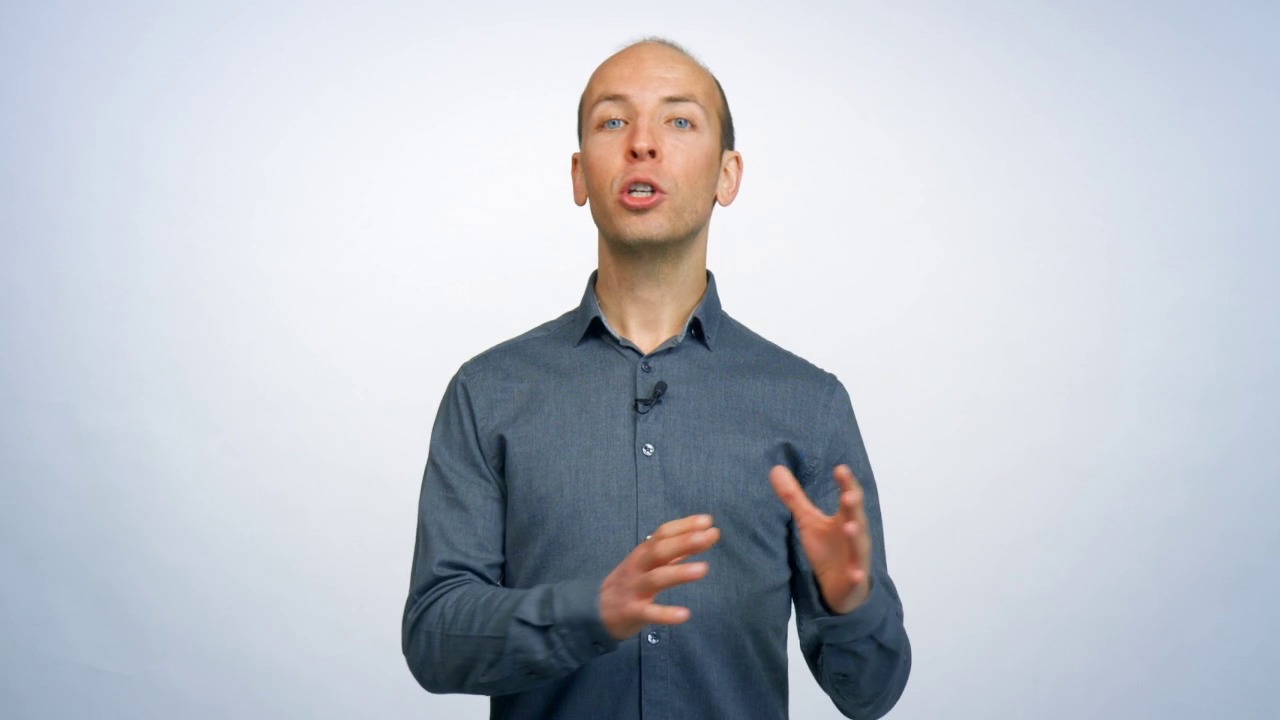The Complete SEO Checklist
Written by Brian Dean

Having grown numerous brands’ organic traffic, these are some of the best strategies and techniques that provide us with a roadmap. It works for e-commerce stores, Shopify sites, local businesses, and affiliate sites among others.
This complete SEO checklist covers all SEO aspects: technical SEO, on-page SEO, and keyword research.
Learn about best meta tags practices and how best to ensure the best site structure for to aid your optimization efforts. Indeed, this is the most complete SEO checklist on the internet.
The best part?
Everything on this list is working GREAT right now.
So if you want higher Google rankings in 2024, you’ll love today’s checklist.
Let’s dive right in…
- SEO Basics Checklist
- Keyword Research Checklist
- On-Page SEO Checklist
- Technical SEO Checklist
- Content Checklist
- Link Building Checklist
- Bonus #1: Advanced SEO Tips and Tactics
- Bonus #2: Case Studies and Examples
- Conclusion
How To Use This SEO Checklist
Hey, I’m Brian Dean.
I’ve used this exact checklist to grow my organic traffic by 161.96% in 30 days:
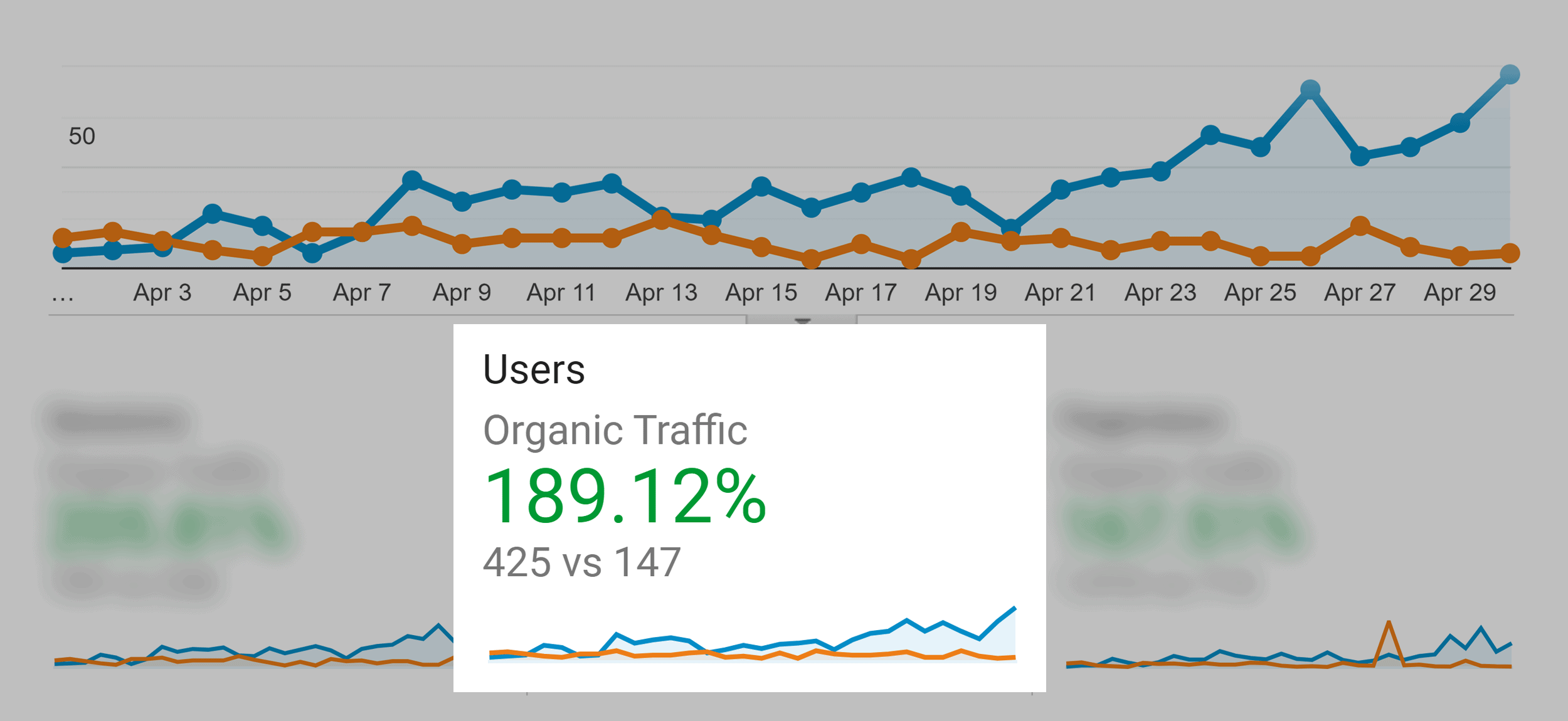
It’s also helped me rank for SUPER competitive keywords, like “on page SEO“.

And “keyword research”:

That said…
You don’t need to implement everything on this checklist.
Just do the best you can.
The more tips you put into practice, the more traffic you’ll get.
After reviewing these checklists, you can take things up a notch with this battle-tested plan for ranking on Google.
SEO Basics Checklist
First, let’s tackle the SEO fundamentals. Here’s where you’ll learn about the tools and plugins you’ll need to rank in search engines.
1. Setup The Google Search Console
The Google Search Console is a VERY powerful free SEO tool.

Search Console is designed to help you track your site’s performance in Google search.
That’s why it’s packed with useful features, like:
- See which keywords bring you the most traffic
- Submit your sitemap
- Fix website errors
- See your page experience scores
- Lots more
In short: if you’re serious about SEO, setting up the Google Search Console is a key first step.
2. Install Bing Webmaster Tools
Next, setup Bing Webmaster Tools.

Is Bing as popular as Google? No. But Bing gets approximately 1 billion visitors per month. So it’s worth optimizing for.
Plus, Bing Webmaster Tools has some nifty features, like a built-in keyword research tool.
3. Setup Google Analytics
Google Analytics is the BEST way to see how people find (and use) your site.

Its many helpful features include:
- See how much traffic you get from Google
- Find the pages on your site that bring you the most traffic
- See if your traffic is increasing (and by how much)
- Identify other sites and search engines that send you traffic
- Your average bounce rate, page views, and time on site
Pro Tip: Connect Google Analytics with the Google Search Console. When you do, you’ll see helpful SEO information from inside of your Google Analytics account.

Here’s a resource that will walk you through the steps to set that up.
4. Install Yoast SEO (WordPress Users Only)
Yoast is the most popular SEO plugin on the planet.
And for good reason.
Yoast makes it super easy to optimize your WordPress site for search engines.

It also helps you with technical SEO stuff, like robots.txt and sitemaps. Recommended.
Keyword Research Checklist
Keyword Research is the foundation of SEO. And in this checklist I’ll show you how to quickly find keywords that your customers search for.
1. Discover Long Tail Keywords With “Google Suggest”
This is one of the best ways to uncover long tail keywords.
Here’s how it works:
First, type a keyword into Google.

But don’t press enter… or the “Google Search” button. Instead, check out the keywords that Google shows you:

(These are known as “Google Suggest” keywords.)
Because these keywords come straight from Google, you KNOW that people are searching for them.
This means that they make great keywords to optimize your site around.
Pro Tip: Check out Keywordtool.io. This tool scrapes Google Suggest keywords, which makes this process much easier to scale.

2. Find Solid Keywords In The Google Keyword Planner
The Google Keyword Planner is Google’s official keyword research tool.

It’s technically designed for Google Ads. That said, it’s still VERY useful for SEO keyword research.
After all, the data comes straight from Google. So you know that it’s super accurate.
Here’s a guide on using The Google Keyword Planner for SEO.
3. Tap Into Online Communities
Reddit, Quora, forums and other online communities are excellent places to find keywords.
And I created a video that shows you how to find untapped keywords in these communities (step-by-step).
Here you go:
4. Identify Low Competition Keywords With KWFinder
KWFinder is a freemium keyword research tool.
What makes KWFinder unique is that it gives you TONS of data on each keyword.

As you can see, when you type a keyword into KWFinder, you get information on:
- Search volume
- Keyword difficulty
- CPC
- Trends
- Estimated visits
That way, you can choose low-competition keywords that are easy to rank for.
5. Find “Question Keywords” With Answer The Public
Question Keywords are PERFECT for blog posts and articles.
(For example: “How do you make cold brew coffee?”)
And you can easily find them with Answer The Public.
This free tool shows you questions that people search for online.

That way, you can answer these questions with your content.
On-Page SEO Checklist
Now it’s time to optimize your content using a handful of tested on-page SEO techniques.
1. Include Your Keyword In Your URL
Your URL helps Google understand what your page is all about. Plus, a keyword-rich URL can improve your organic CTR.

That’s why you want to include your keyword in your URL.
For example, my target keyword for this page is “SEO checklist”.
So I made the URL: backlinko.com/seo-checklist.
Simple.
2. Use Short URLs
Keep your URLs as short as possible.
Why?
A recent analysis of 11.8 million Google search results found that short URLs rank best in Google.

3. Front-Load Your Keyword In Your Title Tag
It’s no secret that you should use your keyword in your title tag.
But not as many people know that WHERE you put your keyword matters.
Specifically, you want to put your keyword in the front of your title tag whenever possible.
For example, my main keyword for this post is “copywriting”:

As you can see, my title tag starts off with that keyword:

4. Embed Title Tag Modifiers
Title Tag Modifiers are words and phrases to add to your title tag.
When you do, your page can rank for lots of different long-tail keywords.
Here’s a video that walks you through this process:
5. Use Your Keyword Once In The First 150 Words
Google puts more weight on the first 100-150 words of your page.
So make sure to use your keyword once here.
For example, for my SEO tools post, you can see that I use the term “SEO Tools” right off the bat:

6. Use Your Keyword in H1, H2 or H3 Tags
Make sure to include your keyword in H1, H2 or H3 tags.
For example:
You might have noticed that I included the term “SEO Checklist” in the first subheader on this page:

Well, that subheader is wrapped in an H2 tag. And including “SEO Checklist” in an H2 can help me rank higher for that keyword.
That said:
This tip won’t make a big dent in your Google rankings.
But when it comes to search engine optimization, every little bit helps.
7. Optimize Images
The images you use say a lot about your content.
Unfortunately, Google still can’t “see” images as a human can.
So to help them understand your images, you want to optimize your image alt tags and filenames.
(As a bonus: optimized images also help you rank in image search.)
Here’s how:
First, when you save the image, use a filename that briefly describes what that image is.
For example, let’s say you just took a picture of a spinach omelette with your iPhone.
Well, you’d want to name that image something like:
spinach_omelette.png
Then, when you add the image to your page, give it a descriptive alt tag:

That’s all there is to it.
8. Use Synonyms and LSI Keywords
Back in the day, it made sense to “keyword stuff” your page.
Not anymore.
Today, Google is smart.
So instead of using the same keyword 1000 times, use synonyms and LSI keywords.
For example, let’s say you want to rank for “how to start a blog”.
Well, you’d want to mention that exact keyword a few times on your page… and synonyms like:
- How to launch a blog
- Starting a blog
- How to create a blog
- How to setup a blog on WordPress
You get the idea 🙂
Next, add some LSI keywords.
LSI Keywords are terms that go along with your main keyword.
You can find a bunch of these using LSIGraph.com.

Then, just add a few of these LSI keywords to your page. And you’re set.
9. Use External Links
Make sure to link out to 5-8 authority sites in your article.
For example, in this list of SEO techniques, I link to trusted websites like Wikipedia and Google.com.

And those links show Google that my content is well-referenced and trustworthy.
10. Use Internal Links
This is super simple:
Whenever you publish a new piece of content, link to 2-5 other pages on your site.
Pro Tip: Use keyword-rich anchor text in your internal links.
For example, note how I use the anchor text “on-page SEO”, in this internal link:
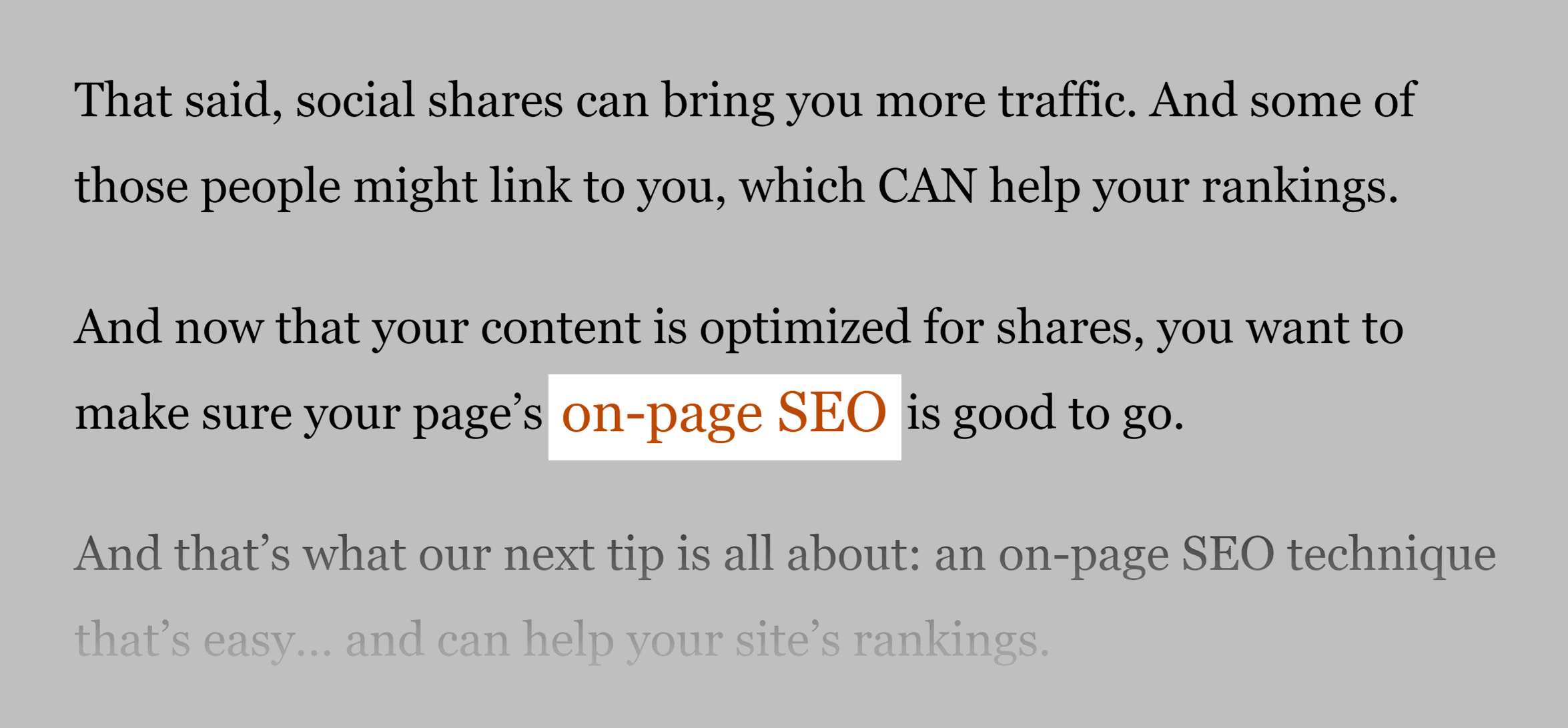
This tells search engines that the page I’m linking to is about: “on-page SEO”.
Technical SEO Checklist
Technical SEO can make or break your rankings. Fortunately, fixing technical SEO problems isn’t that hard… especially if you follow the items on this checklist.
1. Identify Crawl Errors
A “Crawl Error” means that Google has trouble viewing a page on your site.
And if they can’t view your page, it’s not gonna rank for anything.
You can easily find Crawl Errors in the Google Search Console’s “Coverage” report:

If you notice Google is having trouble accessing one of your important web pages (for example, robots.txt is blocking search engine spiders), you’ll want to get that fixed ASAP.
2. Find Out How Google Views Your Page
Sometimes users can see everything on your page…
…but Google can’t.
Again:
If Google can’t fully access your page, it won’t rank.
That’s why I recommend using the Google Search Console’s “Inspect URL” feature.
Just enter a page from your site at the top of the GSC.

When you do, you’ll see your page from Google’s point of view:

Very helpful.
3. Make Sure Your Site is Mobile-Friendly
Google is officially on a “Mobile-First Index“.
Which means:
If your site isn’t mobile optimized, it’s not going to rank very well.
Fortunately, you can easily see your site’s mobile friendliness with Google’s Mobile-Friendly Test.
Just pop in a page from your site… and get a clear “yes or no” answer.
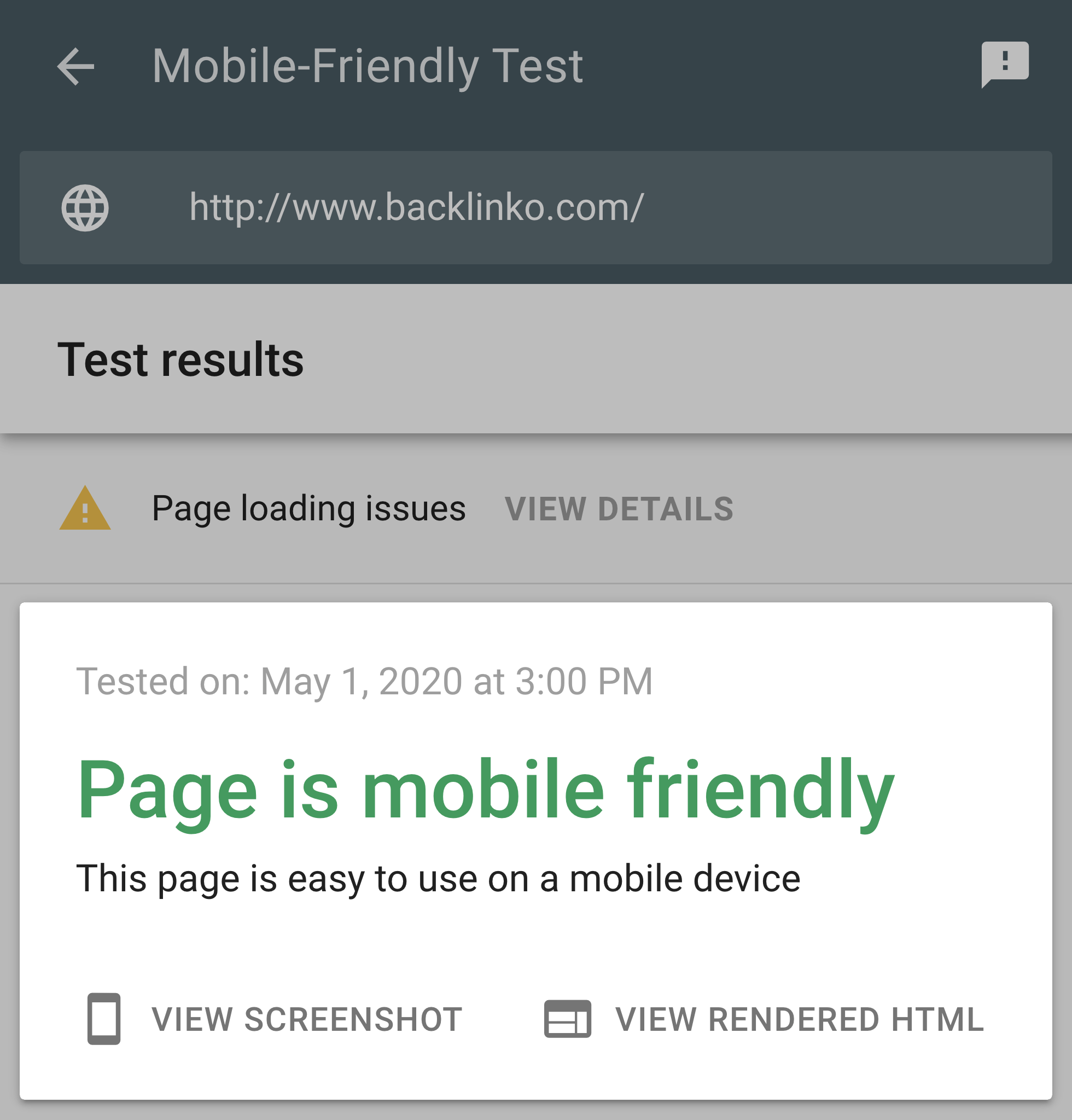
Pretty cool.
4. Fix Broken Links
Broken links can REALLY hurt your SEO.
So you definitely want to find broken links… and fix them.
The easiest way to do that? DrLinkCheck.com.
It’s a free tool that scans your site for broken links:

5. Secure Your Site With HTTPS
HTTPS is a confirmed Google ranking signal.

So if you haven’t already, it’s time to move your site to HTTPS.
(Or if you just launched a new site, set it up with HTTPS on day 1.)
Here’s a guide to help you migrate your site to HTTPS… without hurting your SEO.
6. Check Your Site’s Loading Speed
Does your site load insanely fast?
If not, your site isn’t going to rank as well.
That’s why you want to head over to PageSpeed Insights.
This free tool lets you know how quickly your site loads for desktop and mobile users:

It even lets you know what you can do to speed things up.

Content Checklist
There’s no denying it: if you want to rank in Google, you need to publish great content. That’s why content is now a BIG part of any modern-day SEO strategy. And in this section I’ll show you the exact steps to creating the type of content that ranks in 2023 (and beyond).
1. Create Amazing Content Using “The Skyscraper Technique”
The Skyscraper Technique is a powerful formula for publishing amazing content.
In fact, I used this technique to double my search engine traffic:

Here’s the 3-step process:
- First, identify a piece of popular content in your industry
- Next, create something even better
- Finally, promote that content
Obviously, I don’t have room to go into more detail on these steps here.
So if you want to learn more about The Skyscraper Technique, here are two helpful resources:
My All-Time Favorite White Hat SEO Technique (59% More Organic Traffic)
How I Increased My Search Traffic by 110% in 14 Days
2. Chunk Your Content to Maximize Readability
No one likes reading giant walls of text:

That’s why I ALWAYS break my content into easy-to-read chunks, like this:

These chunks keep my bounce rate low, which is a key Google ranking factor.
(More on that later.)
3. Cover Your Page’s Topic In-Depth
When we analyzed over a 11M Google Search Results, one thing stood out:
Content that ranks best in Google tends to cover an entire topic in-depth.

For example, a while ago I published this guide on my site.

I could have published a generic piece of content like: “5 Tips for Video SEO”.
Instead, I created a guide that covered EVERYTHING about that topic.
And that’s the main reason that it ranks in the top 3 in Google for my primary keyword:

4. Use Schema Markup
Schema markup helps search engines understand your content better.
That said, implementing Schema can be tricky.
That’s why I recommend Google’s Structured Data Testing tool.
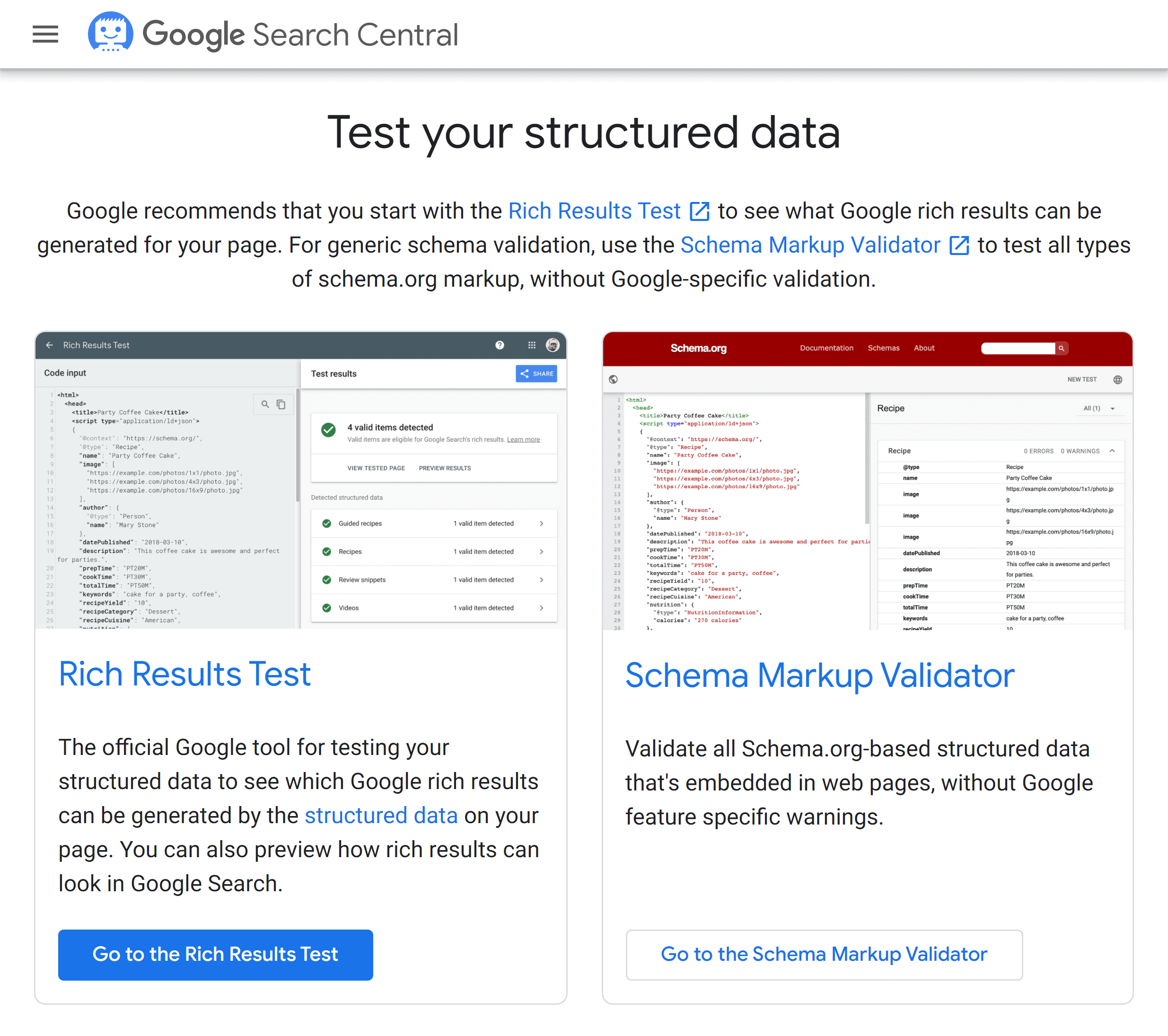
It makes using Schema MUCH easier than trying to do it manually.
5. Focus on Content Formats That Are Working Right Now
The team at BuzzSumo recently reviewed 100 million articles.
So, what did they find?
First, the bad news:
“The majority of content gets zero backlinks”.
Ouch.
Now, some good news:
They discovered that certain content formats perform better than others.
Specifically, “the big winners are sites that have built a strong reputation for original, authoritative content.”
What do they mean by “original, authoritative” content?
- Content written by experts
- Original research (like surveys and industry studies)
- Content that isn’t just regurgitated information
- Case studies and real life examples
- Evergreen content that provides value for YEARS
For example, some time ago I’ve put together this giant list of SEO tools:
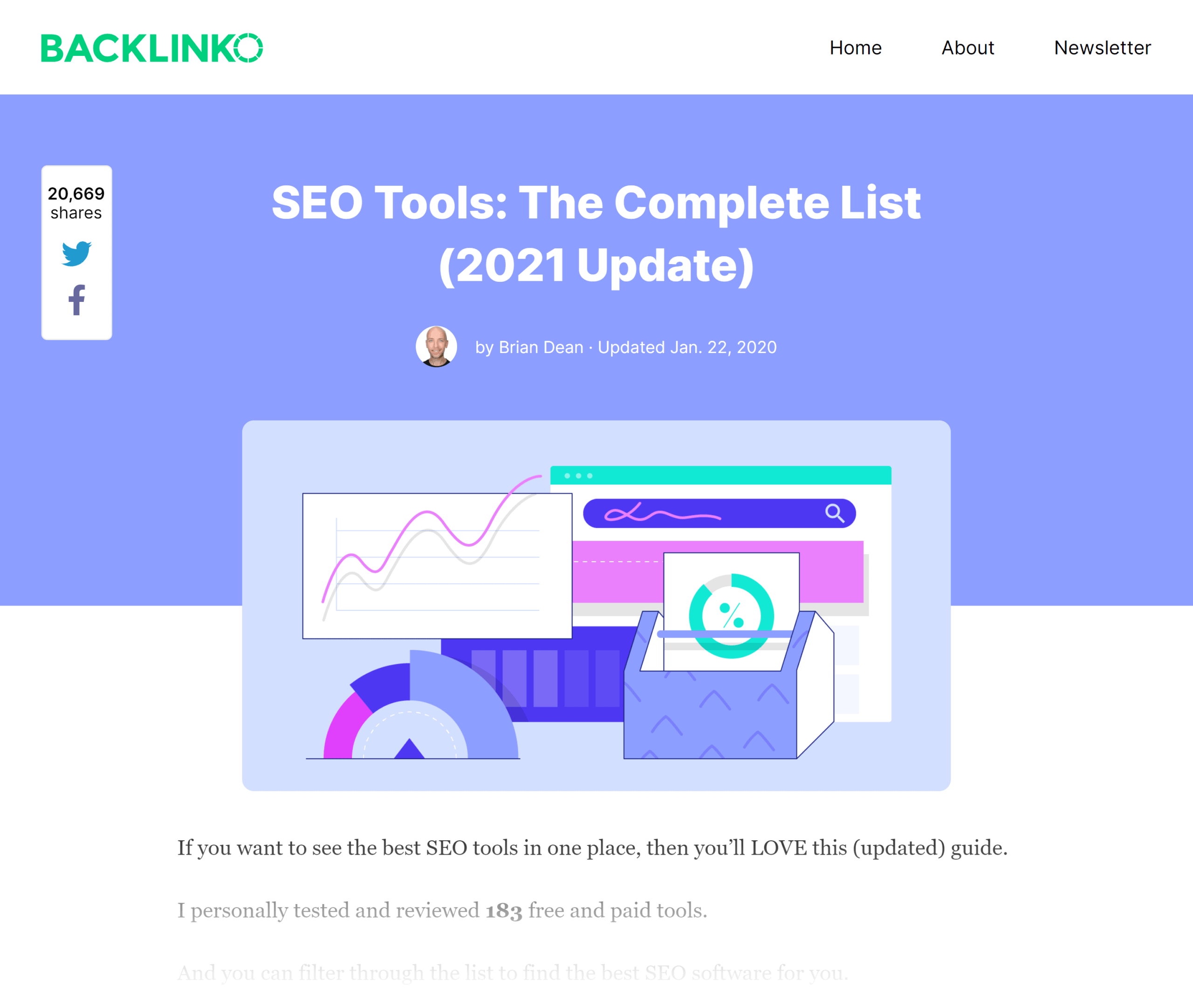
I personally tested and reviewed over 170 tools. It was an insane amount of work.
But it was totally worth it.
Why?
To date, this post has generated over 10 thousand backlinks.

6. Use Multimedia
You might notice that this post contains LOTS of images.
I do this for two main reasons:
First, it just makes for better content.
Second, images and other forms of multimedia help content rank better.
So I recommend using these forms of multimedia in your content:
- Images
- Charts
- Infographics
- Visual Content
- Videos
- Interactive polls and quizzes
With that, it’s time to cover a SUPER important part of SEO: link building.
Link Building Checklist
When it comes to SEO, link building is KEY. In fact, Google has confirmed that backlinks are one of their “top 3” ranking signals. Unfortunately, building links isn’t easy (that’s why most other SEO checklists skip this step). But if you want to rank in Google, links are a must. And in this section I’ll show you how to do it.
1. Build Powerful Backlinks With Guest Posting
Guest posting can be a super effective link building strategy.
That said:
There’s a right and wrong way to guest post.
Right way: Publish your guest post on respected sites in your industry.
Wrong way: Publish guest posts on any website that has a “write for us” page.
In fact, I only guest post on sites that will send me targeted traffic.
For example, I published this guest post on the Buffer blog:

Not only did I get a great backlink from my guest post, but decent amount of traffic too:

2. Reverse Your Competitor’s Backlinks
Why reinvent the wheel when you can copy your competitor’s link sources?
To do this, you’ll need a link analysis tool.
I personally use Semrush.
But if you’re on a budget, you can use a freemium tool like Link Explorer (from Moz).
No matter what tool you choose, the process is exactly the same:
- Grab your competitor’s URL.
- Pop it into the tool
- Finally, get as many of their links as you can
For example, here’s a link report from Semrush of my site:

Now:
Some of these links will be nearly impossible to replicate.
(For example, links from sites I have relationships with.)
But many are pretty easy to copy.
(Like links from guest posts and interviews.)
3. Build Contextual Backlinks With Link Roundups
This strategy works GREAT.
That said, it comes with a catch.
I reveal that catch (and how this technique works) right here:
4. Become a Podcast Guest
This is similar to guest posting.
But instead of contributing an article, you go on a podcast as a guest.
For example, I went on this podcast a few years ago:

As you can see, I got a sweet backlink (and a handful of targeted visitors).

5. Mention Influencers In Your Blog Posts
This process couldn’t be simpler:
First, mention influential bloggers in your content.
Then, let them know you mentioned them.
(Seriously, that’s it.)
For example, when I published my list of SEO tools, I let the founder of each tool know that I featured them:

And, as you can see, they happily shared my content on social media.
Bonus #1: Advanced SEO Tips and Tactics
Now that you’ve got the basics down, let me walk you through a handful of advanced SEO tips and techniques.
1. Optimize Your Site for Click-Through-Rate
There’s no doubt about it:
The more people click on your result, the higher you’ll rank.

CTR is a user experience signal that Google is paying more and more attention to.
I reveal EXACTLY how to boost click-through-rate (CTR) in this video:
2. Limit Website Downtime
If your site goes down, users get mad.
As it turns out, Google gets mad too.
In fact, they state that unplanned site outages “can negatively affect a site’s reputation.”
Fortunately, you can easily track site downtime with a tool like Pingdom.
Pingdom pings your site hundreds of times per day.
If it’s down, you’ll get a notification so you can fix the problem ASAP.

3. Delete “Dead Weight” Pages
Google recently said that a huge site with tons of pages can be bad for SEO.
To quote the Google rep (Gary Illyes):
“Narrow it down as much as you can. Don’t create low quality and no value add pages. It’s just not worth it because one thing is that we don’t necessarily want to index those pages. We think that it’s a waste of resources. The other thing is that you just won’t get quality traffic. If you don’t get quality traffic then why are you burning resources on it?”
This is why I make sure that every page on my site is AWESOME.
In fact, Backlinko generates over 500k unique visitors per month…
…despite having only 196 posts:

How is this possible?
It’s because I focus on 100% quality.
Despite the fact that this quality over quantity approach clearly works, I see A LOT of sites struggle with “Dead Weight” pages.
Dead Weight pages like:
- WordPress category and tag pages
- Outdated blog posts
- Duplicate content
- Low-quality blog posts
- Ecommerce product pages with zero sales
- Archive pages
- Thin content/boilerplate content
- Old services pages
And as you just saw, Google said that these Dead Weight pages can hurt your SEO efforts. So I recommend deleting them.
4. Improve Your Site’s Dwell Time
Dwell Time is another key Google ranking factor.
Google wants to see that people stay on your site.
If people quickly bounce from your page and visit another search result, it tells Google:
“People hate this page!”.

But when people get what they want from your page, they’ll stick around. And Google will take notice:

So:
How can you keep people on your site longer?
Here are a few simple tips that work really well:
5. Update and Relaunch Outdated Content
Do you have old articles on your blog collecting dust?
If so, check this out:
I recently updated and relaunched this post from my blog:

I improved the formatting, added more meaty content, included new screenshots and more.

(Basically, I made the page better.)
Then, I relaunched it like it was a new post.
And that simple 1-2 punch increased search engine traffic to that page by 1,102.43%:

Nice!
Bonus #2: Case Studies and Examples
Now it’s time to show you the strategies from this checklist in action.
Specifically, I’m going to show you how Sean at Proven.com used a handful of the items on this checklist to increase his organic traffic by 88%.
1. How Sean Improved His On-Page Optimization
Sean’s site had A TON of pages.
So it didn’t make sense to spend hours on each one.
That’s why Sean focused on optimizing his 10 most important pages.
Some of Sean’s most important pages were blog posts, like this:

Others were service pages, like his homepage:

But in general, Sean used the on-page SEO tips from this checklist on all 10 pages.
Sean’s content was already well optimized. So it only needed to make a few tweaks.
For example, let’s see how Sean improved his post on questions to ask references.

First, Sean to add his target keyword (“questions to ask references”) in the first 100 words of his article:

He also sprinkled LSI keywords (like “business references”) into his content:

Now that Sean’s content was keyword-optimized, it was time to boost his click-though-rate.
2. How Sean (Quickly) Improved His CTR By 64.1%
Sean had a post on his blog called: 100+ Best Job Boards to Find Niche Talent.

Here’s what the page’s organic result looked like:

Not bad… but could be better.
Here’s exactly what Sean did to improve this listing’s CTR:
First, he looked at Adwords ads for keywords, like “job boards”:
And he noticed that most listed a specific number of job boards in their ads:

(Sean also noticed that NONE of them used the term, “niche talent”.)
So Sean changed his title tag to:
“100+ Job Boards For Job Seekers and Recruiters”
And his meta description tag to:
“Find the best job boards on the web all in one place. See our list of 100+ boards right here.”
Here’s what his Google result looked after the change:

And that page’s CTR was 4.88%…
…64.1% higher than before.

Pretty cool, huh?
3. How Sean Got Users to Spend More Time On His Site
If people stick to your site like superglue, Google will give you a rankings boost.
Here’s how Sean got people to spend more time on his site:
First, Sean pushed his content above the fold.
How?
Well, Proven’s blog posts used to have a big gap between the site’s navigation and the post title:
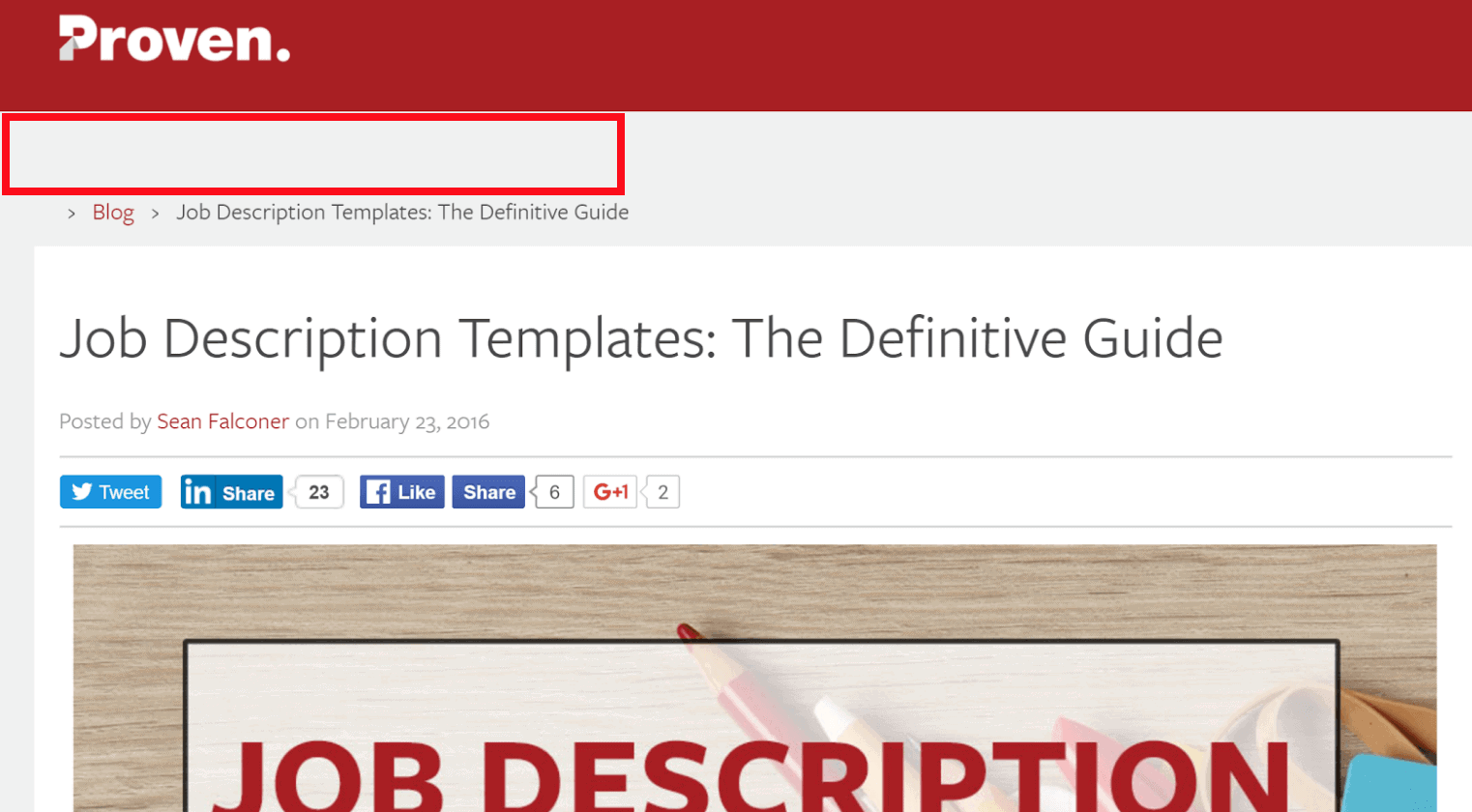
The top of your page is million-dollar real estate.
That’s why you want to avoid unnecessary space that pushes your content below the fold.
So he reduced that space by 50%.
Proven’s blog also had breadcrumbs navigation.

Breadcrumbs navigation is OK for an eCommerce site. But it’s not necessary for a blog.
So Sean got rid of it.
Proven’s blog posts also had massive images at the top of each post.

These definitely looked cool…
…but they pushed Sean’s excellent content below the fold.
So Sean made his post images significantly smaller:

Next, Sean made his blog post introductions “sticky”.
Your blog post introductions are HUGE.
Because the truth is this:
If you lose someone in your intro, you’ve lost them for good.
But if you hook someone with a compelling introduction…
…they’re MUCH more likely to stick around.
For example, Sean’s changed his introduction from this:

To this:

What did he change exactly?
First, Sean cut out sentences that stated the obvious.

He also formatted the content so that there were only 1-2 sentences per paragraph (this improves your content’s readability).

These design and introduction improvements boosted Proven’s “Avg. Time On Page” by 12.2%:

4. What Happened When Proven Deleted 10k Dead Weight Pages
Proven had A LOT of dead weight pages on their site.
In fact, they had 48,300 pages indexed in Google:

Because Proven.com is an online job board, they had a lot of old job listings hanging around:

Not to mention profile pages for companies that hadn’t posted a job in months:

Also, Proven’s search result pages were getting indexed…

…which was creating tons of duplicate content.
So Sean quickly deleted or redirected Proven.com’s Dead Weight pages.
In total, Sean deleted or redirected over 10,000 pages.
And this is one of the main reasons that their search traffic improved so quickly.

Conclusion
As you saw, this SEO checklist really works.
But before you get started on the checklist, I’d like to hear from you.
What did you think of today’s post?
Or maybe you have a question about something you read.
Let me know by leaving a comment below.

